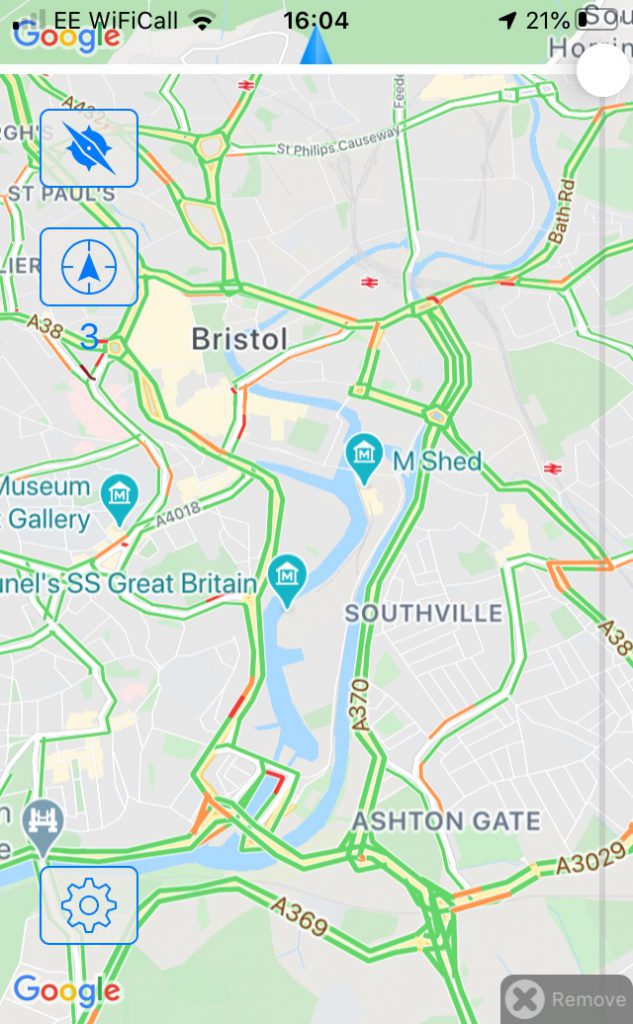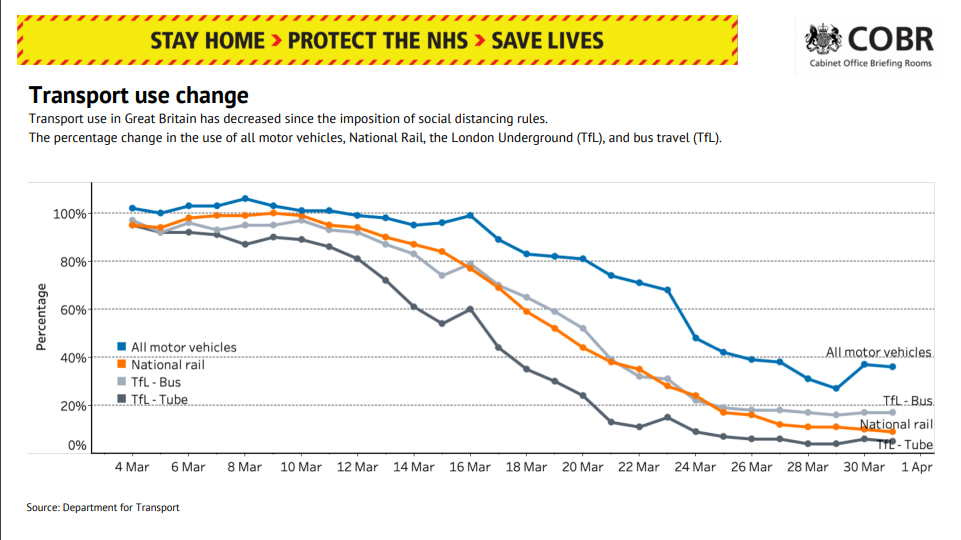The response to the COVID-19 outbreak has highlighted the importance of timely, well executed communications in the effort to keep the public informed.
As this crisis has evolved, agile comms and clear memorable messaging have been at the heart of the government’s approach. Communications also features in many stories about things that aren’t going so well, as people struggle to get the information they need.
Comms comes in for some stick. The challenge of accessing the right detail whilst coping with information overload has been huge. But some of it is working. We are seeing information about support available for businesses come from government to local communities very quickly.
And looking outside suggests the ‘stay at home’ directive is hitting some with most people. This was a traffic map of Bristol city centre at 4pm on Thursday:

This picture is replicated across the country as people heed the government’s advice to stay at home, protect the NHS and save lives.

Adapting to the ‘new normal’
The crisis has impacted every organisation in the UK, no matter what sector they operate in. It’s upended plans for the rest of the year as organisations move into crisis mode.
Communication activity must adapt to reflect this. In doing so, it’s good to bear in mind that the key principles of good communications – clarity, consistency, considering the public – ring as true now as they’ve ever done. Organisations shouldn’t dismiss these principles in the rush to get things done. I wrote last week about good and bad examples of communications during this crisis. I said I’d write something to support communication in these times. This post is my attempt at this.
I’ve written strategies for loads of organisations over the last 15 years – national government bodies, local authorities, universities, housing associations, businesses and charities. Every organisation is different, but there are common aspects to all good comms plans. We’ve produced a strategy template document which you can use to help with your planning. It’s not intended to be definitive or set out all the answers, although we can help with that if needed. But for organisations who are trying to adapt to the new normal, this will hopefully help as a starting point to setting out your approach in simple terms.
This will help you to get buy in from senior colleagues, which will be essential in making communications work (they won’t have time to read a 20 page document). Get these steps right and your organisation will be better for it.
Good luck with your work. If you’d like to discuss further, drop me a line.
Our eight step comms strategy
#1 Introduction
Define the problem. Is your challenge related to closures, temporary lay-offs or other significant changes? Do you need to stay front of customers’ mind? Are you trading whilst furloughing staff? Focus on facts and use data to clarify your point. This will help to define the communications challenge at the outset. You can’t provide the right answers without establishing the problem first.
#2 Objectives
Explain what you’re trying to achieve, not what you’re aiming to do. Be focused on outcomes (the end result), rather than outputs (emails, newsletters, web updates). These may include:
- Making businesses aware of where to access support.
- Influencing and changing customer behaviour.
- Connecting people with your products or services.
#3 Audiences
Who you need to reach: Although the reality is often more complex and nuanced, at this time our clients have three broad types of people they need to engage. These include:
- Staff, as an organisation’s representatives and points of contact with the public.
- Clients and customers (for businesses and service providers).
- Partners, stakeholders and decision makers.
Think about what these people need now, and how they want to hear from you. Get the data and evidence to support your thinking. CRM, analytics and publicly available data from government on social economics and media habits are all useful here. If you have time, social listening can also be useful in finding out what people are saying about a topic, subject or brand.
Aim to be helpful and useful. Remember what you’re trying to achieve (see point #2).
#4 Big idea
Strategy in a sentence: What is the big idea that binds everything together? Think about what you’re trying to achieve, and why, and what will catalyse the response you’re looking for. If you can condense this into a sentence or paragraph, your plan will flow from here.
#5 Messages
What you’re going to say: Key messages and ‘lines to take’ are overused, but clear and memorable ones work well. In my experience, it’s best to stick to no more than five messages (at most) and use them consistently. Keep them simple and jargon free. Focus on the areas which help you to make the key points: who, what, when, where, how and – crucially – why. Include a ‘call to action’ (what do you want people to do?). Support them with facts. Always. Think about how frustrating it is to hear politicians use messages without any facts to back up what they’re saying. Avoid this approach. Messages without facts are slogans. Get the facts from your colleagues.
#6 Channels
How you’ll communicate: Shape your approach around the audiences you’re trying to reach. Most approaches use a blend of creative, online content with a more personalised approach. But don’t just go for this because you can. Social media will only work if the people you need to reach are following your channels already. If you’re spending time creating a web page that no one reads, you’re wasting your time. Think of your audience. Don’t spend time reinventing the wheel; if good material already exists, use it. The role of colleagues in supporting this approach – managers and front-line staff – can be invaluable here, especially if they’re active online.
#7 Resources
How much will this cost? What activity can your team deliver? Map what can be realistically done with your resources and identify gaps that you need support for. Separate the ‘must haves’ from the ‘nice to haves’. If you’re doing anything that’s not a priority and can be put on hold, use that time in other areas. Use this to make a case for additional budget if you need it.
#8 Measuring success
What does good look like? Ultimately this needs to link back to your objectives (what you’re trying to achieve). Set out some measurements by which your work can be measured. Make this a continuous process and iterate your approach as you go. Do more of what works well, and less of what’s not working well over time.
Once you’ve set this out, you’ll need a timing planner to set out what’s happening when.
You can download your strategy template here.


